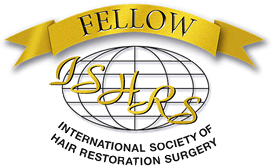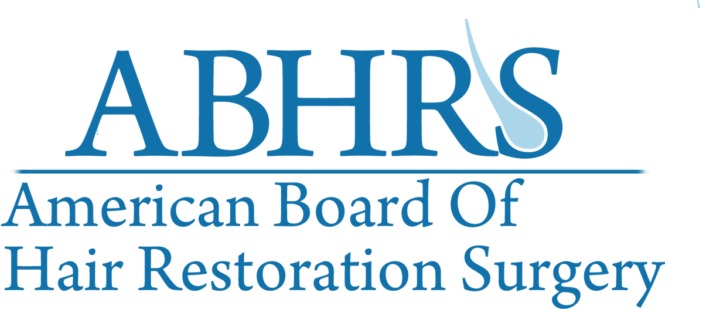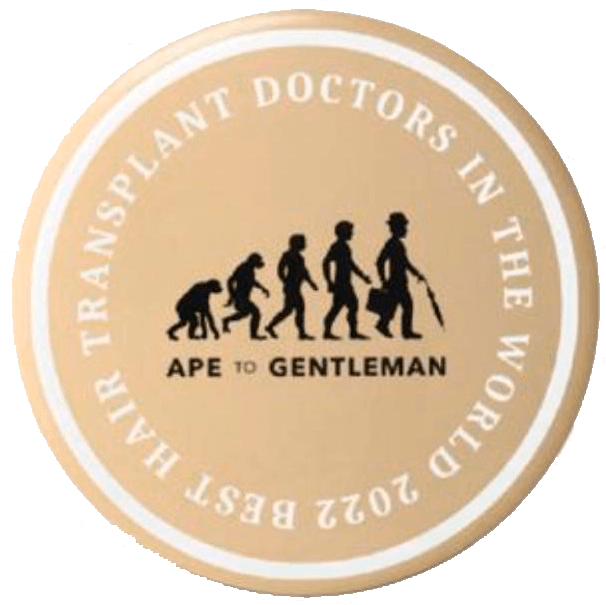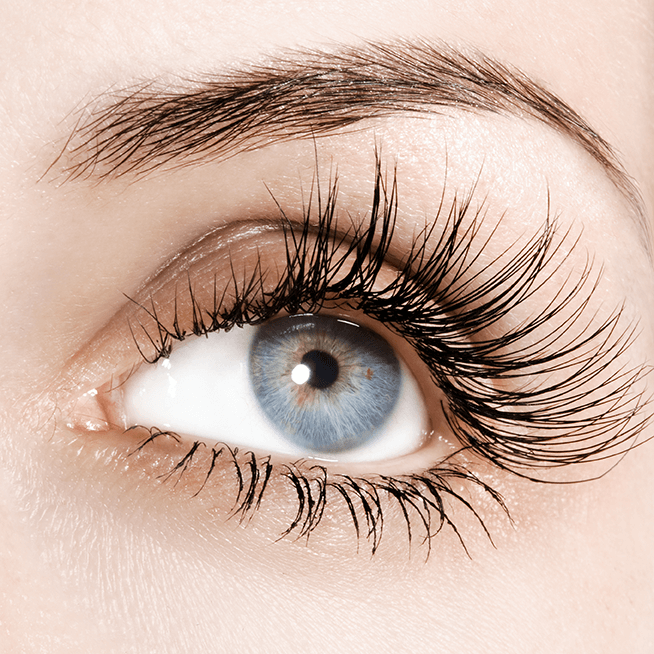On this episode of the “Awesome Health Podcast”, Dr. Bauman takes a deep dive into the causes of hair loss in men and women, describes a number of treatment options, and provides Wade Lightheart a live online Hair Consultation during their chat.
If you or someone you know has hair loss, hair thinning, baldness, or eyebrow / eyelash concerns, click to start either a long-distance virtual consultation OR an in-person, in-office consultation with Dr. Bauman. You can also Ask Dr. Bauman a Question or simply call Bauman Medical Group at +1-
*Each individual's treatment and/or results may vary
**TRANSCRIPT**
0:00:00.0 Wade Lightheart: Okay, today’s topic is going to be, what causes hair loss in men and in women, and what are the various hair restoration treatment options, both surgical and non-invasive? And of course, today we have none other than Dr. Alan Bauman, who is a full-time board-certified hair restoration physician, who has treated over 30,000 patients, has performed over 10,000 hair transplant procedures since starting his medical hair loss practice at Bauman Medical in 1997. Dr. Bauman was voted number one Top Hair Restoration Surgeon in North America by Aesthetic Everything for the fifth consecutive year, Top Hair Restoration Surgeon of the decade, and he was recognized by Forbes as one of the 10 CEOs transforming healthcare in America. He is a frequently invited faculty member and guest expert at numerous international scientific meetings and live surgery workshops, and has been featured in hundreds of news stories in the media.
0:00:50.9 WL: You may have seen him on NBC Today, CBS Early Show, ABC Good Morning America, CNN, The Doctors, Spencer Kobren’s The Bald Truth, Bulletproof Radio with Dave Asprey, or featured in Men’s Health, GQ, Vogue, Harper’s Bazaar, The New York Times, Oprah Magazine, and many, many more. Bauman Medical is a 12,000 foot state-of-the-art Hair Hospital in downtown Boca Raton, Florida, located about a mile from the world-renowned Boca Resort and Club, and Dr. Bauman is known for pioneering numerous technologies in the field of hair restoration, including minimally-invasive FUE Follicular Unit Extraction, VIP|FUE, No-Shave Hair Transplant, Low-Level Laser Therapy, PRP platelet-rich plasma and PDOgro, Eyelash Transplants and others, and he’s taken time out of his busy schedule today to join us. And as an added bonus, we’re gonna do something very special and do a consultation online. I hope you enjoy this podcast. I’m Wade T. Lightheart from BiOptimizers. Let’s dive into it.
0:01:55.1 WL: Good morning, good afternoon, and good evening. It’s Wade T. Lightheart from BiOptimizers with another edition of the Awesome Health podcast. And boy, this one is gonna be a barn burner because we’re gonna do a live hair consultation with none other than Dr. Alan Bauman. I just ran into him not that long ago at the upgraded Bulletproof conference, I’m not sure what Dave’s calling it now, with everything going on over at Bulletproof, but it’s a great biohacking conference. I guess the Seventh Annual Biohacking Conference to be accurate. And one of the topics that I think is an issue for both men and women, and that is what causes hair loss in men and women, what are the various hair restoration treatment and options, both surgical and non-invasive? And Dave Asprey is very public about that. He worked with you in order to address some of his hair things. It’s a sensitive topic for a lot of people. They’re embarrassed about it. They wanna talk about it. There’s a vanity issue. There’s all these different things about it.
0:03:00.5 WL: So what I’m going to do today is we’re gonna have Dr. Alan talk about his clinic and what he does and how he does it, and the latest cutting edge things that you’re doing down there, which are pretty far out. We had a quick conversation at the event, I was very impressed. And then we’re gonna do a live quick consultation myself directly, so you can actually see this. This is a suggestion by the good doctor earlier, and I’m like, “Yeah, I like that idea. That’d be really fun.” So let’s get into it. First, I’d like to know, what got you started in hair restoration program? Like what was the driver behind that?
0:03:36.4 Alan Bauman: Yeah, well… Well, thanks Wade. First of all, thank you so much for having me on, it’s great to be with you and to be in front of your listeners and followers, and I’m really glad that we had a chance to connect at Dave’s conference and had that chance to chat. So yeah, great to get this information out, there’s a lot of taboo associated with hair loss and hair restoration, it’s different today than when I got started back over 25 years ago in the field, and the technology has changed so much, even just in the past five years, so there’s so many new things that are happening in the field of hair loss and hair restoration. But I’ll tell you the one thing that has not changed is how important hair is for people. And in my background, as a general surgeon and always with an interest in plastic surgery, being mentored at an early age by a plastic surgeon, I really had no idea what a hair transplant was like in the early to mid-1990s, when I first discovered the whole field of hair restoration actually.
0:04:34.0 AB: And I was introduced to hair transplants by a patient, a patient who had had a procedure done, and I was essentially interviewing him, taking a good history and physical exam for the intake for his next procedure, cosmetic procedure, and he had told me, revealed to me that he had had a hair transplant. I’m looking at his hair, and I’m trying to figure out what’s going on up there, ’cause it doesn’t look like a hair transplant, it just looks like a normal hairline, and so I asked him, “Hey, do you mind if I ask you where you had your hair transplanted and how did that all work out?” And he was not a physician, he basically described to me in layman’s terms how hair transplants worked, and I was amazed to see that it looked 100% normal and natural. I was expecting to see plugs, and I was expecting him to describe some kind of a painful process.
0:05:23.8 AB: And what he said was that it was a pretty comfortable process, pretty comfortable procedure, and obviously he was thrilled that I could not tell that he had had it done. But the one thing that really stuck with me from that first conversation was how it changed his life and I’ll never forget his description of how he changed personally and professionally after he told me he got his hair restored and just… That’s something that always stuck with me, and that was kind of the light bulb or at least a flicker in my brain that maybe I should go check this out and see if there’s anything to it. And if I could add it to maybe my plastic surgery repertoire.
0:06:01.8 AB: And like I said, that was back in the 1990s. I eventually got more involved in learning about hair transplants and hair restoration deeper and deeper as I went along and visiting different physicians, going to different conferences, reading textbooks and journal articles, and really just diving in a 100% full tilt and eventually, doing a fellowship and essentially not ever going back to plastic surgery. I’ve been a full-time board-certified hair restoration physician since the mid-1990s, so over 25 years in practice today.
0:06:31.5 WL: Wow, that’s an incredible story. You touched on something that was… I was first introduced to this concept in a book I read years and years ago, probably more than 20 years ago, which was Psycho-Cybernetics, which was written by a plastic surgeon, and he talked about the subconscious or psychological impact of various conditions, and he would have to… He would go through an extensive process with his clients beforehand because he wanted to make sure that they made the adjustment psychologically and emotionally relative to whatever procedures they were having, or if they were not a candidate because of those components. What would… Because we’re talking about… Everybody’s in the biohacking community is talking about health and vibrancy and living long and living strong, but there’s also a cosmetic side, we’re all… We all get up in the morning, we all look in the mirror, we all experience life through the lens of what we have, and how that lens looks and feels is much a part of our psychology. What are some of the common elements or challenges people experience when they’re losing hair or it’s diminishing, or the subcon… What are the things that people share with you, the emotional side of it before we get into the technical procedures?
0:07:53.1 AB: Yeah. Sure. Well, when patients come in and they’re losing their hair, whether they’re seeing a receding hairline or a bald spot developing in male patients or women who are losing volume and coverage in certain areas or are also receding potentially, they see that as a sign of their youth slipping away and that’s not so good. If you’re in a field of anti-aging, you wanna keep and preserve your appearance. And especially if you’re one of those types of persons who, let’s say, was proud about their hair. A lot of my patients come to me and say, “Hey, my hair was like a really, really good feature and I was known for my hair,” or “My barber said, ‘Wow, you have such thick hair, you’re never gonna lose it'”, or you’re… “The stylist always said, ‘Oh my God, I feel the hair.'” And so when hair loss occurs, obviously you start to look different. And young men, men in their 20s, their hairline can start to recede and they look much older than their stated age, and that may be the reason why they start to wear a baseball cap to reframe their face accordingly, to replace what you would normally get with the hairline, guys who get a photo of the back of their scalp and maybe sitting on their mantlepiece or something like that, or they see a video or some video camera catches…
0:09:08.7 AB: A security camera catches them on camera and they see that bald spot and they’re like, “God, who is that old guy? I don’t wanna be that guy.” So I learned this at a very early age, ’cause I watched my dad struggle with hair loss when I was literally a teenager, and he went through the lotions and potions, and this was, of course, in the 1980s, I guess. And eventually, I guess, he had decided to get a hairpiece at the time, and he wore a hairpiece for 20 years before we restored his full head of hair. And so that was an early education for me about how hair affects people psychologically. And today, it can turn into a panic situation, so people would go on the internet, they’ll start searching for magic vitamin or magic shampoo, and of course, there is none, you have to get medical evaluation and treatment for hair loss. And especially for women who are losing their hair, they feel like they’re losing a sign of their beauty, their crowning glory, they look… If they’re receding a little bit, that can make them look more masculine and that’s not so good either.
0:10:10.5 AB: So people… There’s a lot of detrimental depressive and anxiety symptoms that come along with losing your hair because this is… Unless you’re talking about a rhinoplasty reconstruction because you had some kind of a damage, putting your hair back, that’s something that you had. So, most people today, if they chipped their tooth, they would go to the dentist like within a day and go get it fixed, but if you’re losing your hair, many people don’t know somebody who can fix that and put it back undetectably, comfortably and all of that, like a board-certified hair restoration surgeon. Well, I guess the point is, is that good news is that now we can fix those things and you don’t have to do the panic shopping on the internet, Amazon, or run around to every endocrinologist and dermatologist, trying to search for options because that’s gonna lose time. And in the field of hair restoration, we say “Time is follicles”, because every moment that you’re not on treatment, things are typically getting worse, they’re not getting better.
0:11:09.3 WL: That’s a good point. So I can think back, my first experience of thinking around hair loss in the family, I remember my grandfather had one of these funny brushes ’cause he was balding, he would brush his head with it, it was some magic brush. And I remember as a kid thinking, that’s kind of funny. I never imagined my grandfather that had a full head of hair, for example, ’cause I never saw him that way. And then Telly Savalas, I think it was, was Kojak, was the first actor with no hair, and that was just so radical. Yet this is a very intimate subject for people and they’re not comfortable. Would you say that hair… What are the differences or things that have changed since the scrubby bush and the snake oil salve that’s gonna make your hair grow, what’s changed particularly in the last five, 10 years?
0:12:10.4 AB: Yeah, so I was gonna go back to the…
0:12:12.4 WL: Go back all the way.
0:12:13.4 AB: Ebers papyrus 5000 years ago, when the Egyptians wrote down their magical mixture of pigeon droppings and lizard skin, and things like that, there was no mention of how that clinical trial actually worked out, obviously.
[laughter]
0:12:25.5 AB: But that’s the most ancient medical document in the world and obviously it mentioned a cure for hair loss. But look, we didn’t have an FDA-approved drug until the 1970s, Rogaine, minoxidil, was the first FDA-approved medication for male pattern baldness. And that kind of set the bar for snake oil, right? So you had to get bet… You had to get clinical trials and you had to get FDA approval, or else you were just down and below messing around in a muck and gunk. So I guess that was the first thing, but certainly what’s changed a lot over the past 25 years that I’ve been in the field, is we have very effective treatments now.
0:13:03.7 AB: So the second FDA-approved medication, finasteride, works really well for men. It’s a 90% success rate with only a 2% chance of side effects. We have non-invasive therapies, non-chemical therapies, like red light therapy to help protect the hair that you have, FDA-cleared laser devices, which are really powerful today. We have regenerative medicine treatments, such as PRP platelet-rich plasma, PDO polydioxanone, PDOgro, exosome therapy, stem cell therapies, those types of regenerative treatments. And of course, the miracles of hair transplantation, which has changed dramatically over the past couple of decades, from plugs which were really ugly-looking, to strip harvesting, leaving you with a linear scar, to what we do today, which is minimally-invasive FUE Follicular Unit Extraction or excision, as some people call it, taking the grafts one at a time, and then hopefully artistically placing them into position so that the end result looks good.
0:14:02.6 AB: And so, we’ve got this whole gamut, not just of therapeutic interventions, but also of diagnostic interventions, so like AI-powered microscopes that we have in the practice now to literally count hair by hair, without having to trim any hair, to actually categorize whether your hairs are thin, thick or medium or fine, or everywhere in between over time. And pharmacogenomics, like DNA testing, you take like a old cheek swab, that’ll determine what kind of therapies and treatments are actually gonna work for you, so you don’t have to waste all the time with the trial and error, and the measuring, and things like that as you go along, we can zero in on exactly what treatments are most likely to work for you using personalized precision medicine. So it’s amazing, the technology and how it’s changed over just the past couple of years, it’s… It’s unreal.
0:14:54.0 WL: So let’s talk about your clinic, in particular. You’re down in Boca Raton, Florida, if I’m correct.
0:15:04.2 AB: Yeah.
0:15:04.7 WL: Walk me through what is the process for people… Who comes there, what’s the typical process and the whole nine yards?
0:15:13.7 AB: Yes, well first of all, I’m one of the few board-certified hair restoration physicians to have my own standalone clinic. We have nearly 12,000 square feet, it’s all hair all the time. I have nearly 30 team members, about half on the clinical side, half on the admin side. I’m the only physician, although you have mid-levels like nurse practitioner and such to assist with the procedures. But when someone comes into the office, usually, it starts with the website. And so half of our patients visit us virtually, meaning they would do a virtual consultation like this on Zoom, video console to determine what their situation is. The other half of our patients may fly in or drive in to the office for an evaluation, a measurement and a diagnostic evaluation.
0:15:58.3 AB: And then we can decide from there, what are we trying to accomplish? So we’re working together with the patients, looking at their current hair loss status, measuring areas of their scalp that we may wanna try to protect, enhance or restore, and then develop some kind of a treatment plan, combination of non-invasive therapies to hold on to the hair that they have or to enhance hair follicle function, or restore, at the same time, restore areas that have been lost, whether it would be a hairline or a balding crown. For women, it could be a hairline or frontal density, or it could even be eyelashes, eyebrows or side burns, these are all potential areas of restoration that we do in the practice. And I see probably about 1500 patients per year. We perform hundreds of surgeries per year, and hundreds and hundreds of PRP and other regenerative treatments per year as well.
0:16:55.1 WL: Wow, that’s an impressive amount of clients that you’re seeing, for sure.
0:17:00.5 AB: I’ve treated over 30,000 patients and performed over 10,000 surgeries, over 10,000 PRPs, and it’s certainly growing strong, as we say.
0:17:09.7 WL: Wow. So going into this, I guess you would have kind of like… You have your consultation and then there’s a determination of what the course of action would be, and then there would be some sort of follow-up or a maintenance program in order to retain the gains that you would have made. Was that an accurate assessment?
0:17:28.3 AB: Yeah, for sure. And again, it’s something that’s very, very different than many just hair transplant surgeons or specialists do because we take a more holistic approach. If the evaluation of your scalp includes the fact that we find, let’s say, some kind of inflammation, maybe some itching, flaking, dryness, or it’s oily scalp or some other irritation going on, I have an entire department to take care of the health of the scalp. We call that Salon B, but it’s not really a salon, it’s a Trichology Department and also a head spa.
0:18:03.1 AB: So those are do good, feel good treatments and evaluations. If the patient has some kind of a scalp health issue, we can address those. And then of course, on my side, we’re gonna put together a regimen of preventative therapies, what we call the medical management of hair loss. And so depending on their diagnosis, obviously, and what we’re trying to accomplish, we would tailor the treatment regimen to that. But yeah, I have patients coming in every 90 days for measurements, again and again and again, and tracking their progress. And so we would typically will see this improvement on regimen and then there’s gonna be a plateau phase, where the hair growth is basically stabilized, and at that improved level, and their visual improvements are continuing to improve over time, month by month, until we get to a certain plateau point, and then we have to decide, is there something more that we wanna try to enhance from adding on additional therapies or not?
0:19:01.0 WL: Very good. That’s excellent. So there’s a really good post-care components, not just come in, get your thing out the door, see you later, there’s… ‘Cause I guess there are some elements that we can control and some things that we can’t. Would that be accurate?
0:19:16.6 AB: Well, that’s true. I mean, look, we can’t change your DNA, your DNA is gonna tell you your susceptibility to male or female pattern baldness, for example, male and female hair loss, androgenetic alopecia is chronic. That means it happens over time and progressive, it gets worse over time if you don’t treat it. So how fast the hair loss comes on after puberty, that’s a genetically determined factor, how quickly it progresses is the other factor that you’re gonna see over time. And so everybody’s different. I have patients that come in at a certain stage of hair loss at 50 years old and then I have guys who are half those ages and twice their hair loss situation, obviously those two patients have a very, very different momentum when it comes to their hair loss situation, so their regimen might be quite different.
0:20:05.6 WL: So one of the things I think a lot of people forget when they’re dealing with a professional and medical doctor, is the doctor’s ethical responsibility is to provide risks, benefits and suggested options. We’ve covered a lot of the benefits of this. What are the potential risks of getting surgery? Is there any complications or medications or things that people need to be mindful of going in before?
0:20:34.7 AB: Yeah, so we discuss risks and benefits for all of the different modalities, not just for hair transplant surgery, and of course, we’re operating every day, I’ve got five procedure rooms, we don’t use all of them every single day, but we have procedures going on, we have PRPs going on, and so, of course, risk and benefit is a part of any surgeon’s repertoire because before we take any person to the operatory, even though it’s a comfortable procedure, even though it’s less invasive than it was before, a hair transplant is a procedure. And it’s done under a local anesthetic, it should be quite comfortable, but it does take some time, and so we have to have the first, most important thing, which is a good plan. So if I tell you that you need only 1000 grafts in one session and you’re gonna be great, but actually you need 4000 grafts in two sessions, that’s not such gonna be a good outcome, even though that didn’t put your health at risk, it put your psychology at risk, right? To put you… It was inappropriate expectations. So the first thing we talk about always, what are the appropriate expectations for what the procedure can provide? And we make sure we’re clear on that. And then the longevity of your results, the transplanted hair doesn’t need any help.
0:21:49.8 AB: Not too much anyway, it could be boosted a little bit with PRP, accelerated from the procedure with PRP, but essentially those transplants are coming from the sides and the back of the scalp, so those are gonna be there forever, wherever we put them, in the hairline or the crown. The key is concurrent therapy to protect you from the ongoing hair loss in the non-transplanted hairs. So the most common risk is that a person has a procedure but they don’t continue on with medical therapy or they fall off the wagon. And so that’s not so good. We wanna make sure that they stay adherent to the plan that we all talked about, make sure that they understand that they gotta continue, whether it be a topical medication, an oral medication, nutritional, a nutraceutical, that they’re using the laser that they invested in, or that they’re coming in each year for PRP treatments, and that at least, we’re measuring so that we can tell if something’s going off-track or not.
0:22:42.6 AB: And that’s really been the secret to our success with our patients is that consistent follow-up and that kind of team approach, where we have the patient really being a part of the solution, instead of just kind of letting them go off to their own devices and becoming a desperate problem later on after a procedure. But the good news is that most of my patients don’t even need a hair transplant today. The vast majority of patients are coming in at such an early stage that we can prevent hair loss, we can keep them looking good for the long-term. But yeah, risks and benefits. Medications, we’re gonna talk, obviously.
0:23:17.9 AB: Topical medications can cause irritation, and it’s one of the reasons why we prescribe compounded versions instead of the over-the-counter ones, you’re less likely to be “allergic” or atopic dermatitis, which is a common reaction to over-the-counter Rogaine can be virtually eliminated with compounded pharmaceuticals. The systemic side effects from the oral treatments for male pattern hair loss, like finasteride, can sometimes, about 2% of patients have sexual side effects. We eliminate that, again with compounded topical versions of the finasteride. And other things like lunch hour treatments, PRP and so forth, your scalp will be a little bit pink, a little bit numb from that procedure, but you’re not gonna have any kind of interruption in your daily life. You could still go to the gym, you can take a shower, shampoo, you can get right back to work. It’s a pretty non-eventful procedure, in terms of our PRP treatments. And of course, hair transplantation is gonna take about a week or so to heal.
0:24:18.1 WL: Beautiful. Well said. Well, hey, we’re gonna switch gears as on your suggestion a little bit for our listeners. We’re gonna do something a little bit more radical, we’re gonna do a consultation. I’m gonna be the consultee, [chuckle] I guess that’s what it is, and you’re gonna be the expert, obviously. [chuckle] I think we’ve established the pecking order here at this conversation.
0:24:38.8 AB: Well, I don’t know, Wade, do you think I need a little bit of hair right [0:24:40.7] ____? Certainly no.
[laughter]
0:24:44.9 WL: So, let’s show people what a consultation is like so they can get past that “I’m gonna go public with this”, so that people can say, “Hey, this is not something to be embarrassed about or something, just go with it and see what it’s like.” Let’s begin.
0:24:58.1 AB: Right. Just so set it up, normally, our consultations are scheduled through the website, at baumanmedical.com. They usually take about 30-40 minutes. We ask patients to send in photos prior to their consultation scheduling, so we have some idea of what they look like ahead of time. I want a detailed medical history. Now, of course, we don’t have all that stuff for you, Wade, but I can see what you look like. But I would like…
0:25:22.2 WL: Yeah. I can turn around here, you can see the [0:25:24.5] ____ back, the area.
0:25:25.0 AB: Yeah, that’s perfect. Wade, it’s great to connect with you today and speak to you about your hair loss situation, were you referred by somebody that we know, like Dave Asprey?
0:25:36.1 WL: Yes, Dave was someone that advocated for you and he had suggested that he had a lot of success working with you and then we met at the clinic, so yes, I was referred by [0:25:46.2] ____.
0:25:46.3 AB: Yeah. No, that’s pretty cool. So tell me a little bit about your hair loss situation and maybe what you’re seeing in the mirror and how it looks to you when you look at your hair, when you first became aware of some hair changes. What do you think?
0:25:56.9 WL: I think maybe in my late 20s, I just started to notice, over here on the sides, particularly this and the side, it would just start to go back a little bit more, a little bit more. Nothing that was alarming, but something I do recall noticing. It’s kind of like when you get your first wrinkle. You get your first wrinkle and you’re like, “Yeah I don’t remember those, what’s going on there?” And then all of a sudden, you got a bunch more and it’s like, “Oh, I’m getting older.” So there’s been no real dramatic changes from early on, it’s just a… I would say, a percentage of loss is happening each year. Now, I have very fine hair as well, as you could see it’s blond and very light, so that also amplifies it in certain lighting when I’m on lights and things like that, so the light shines right through my hair, so it’s kind of like, hm, I’d like to be a little thicker, I’d like to kind of prevent it from going full Kojak too soon.
0:26:54.7 AB: Sure, sure. And we had mentioned before, you do have some hair loss in the family, mom’s side or dad’s side?
0:27:01.6 WL: On my father’s side. Yes.
0:27:02.4 AB: Yeah. And so we know hair loss is genetic, male pattern baldness does come through the families, it can come from either/or, mom’s side or dad’s side or both. It can skip generations, skip siblings. Do you have any brothers?
0:27:14.3 WL: No, so I’m the only one.
0:27:16.0 AB: So sometimes it can skip, like one brother has more hair than the other does. Most guys see exactly what you notice, a receding hairline, and sometimes you can see some also thinning in the crown. Now, a lot of times, when we’re… Did you notice that you had any thinning up in the crown area?
0:27:29.8 WL: No, no. You can take a look here, you can… Should I turn around?
0:27:34.0 AB: So it actually… Yeah. It actually does look a little bit thin on the video, and so normally, for example, when we would have you send in your photos for the virtual consultation, sometimes when patients wet their hair, part it and photograph, it’s the first time they’ve actually seen themselves with hair loss in the crown because most guys don’t spend a lot of time looking back there in general. Unless someone… Unless one of their friends have already told them. So that might be something that we wanna talk about, but the good news about that crown area is that we can definitely protect and restore that area, probably with non-invasive therapies, it doesn’t look so bad. But these areas up front, if you wanna try to maintain what you have, that would typically be on the non-invasive side of things, so we can talk about some of the non-invasive ways to keep the existing hair, but if you’re looking to change the way that your hairline looks, then obviously, we would need to do something more aggressive. Have you been on any therapies or treatments for hair in the past?
0:28:30.2 WL: Nothing. Never done anything for it.
0:28:31.3 AB: Haven’t done anything.
0:28:33.1 WL: I think it was my business partner not long ago, commented something about hair loss. He’s known me for 20 years, and I thought, “Jeez, if somebody else is noticing me, maybe I better pay attention to this.” [laughter]
0:28:46.0 AB: Yeah. And sometimes that’s what happens… That conversation could be a friend or family member, somebody just kinda jokingly says something, but obviously, if it’s obvious to them, some significant hair loss has already occurred. In fact, when we see that the hair is thin to the naked eye, like you can see some scalp shining through, we know that almost 50%, if not more of the hair has already gone in that zone, it just depends on your hair caliber, so a lot of hair loss can happen undetectably to the naked eye. One of the reasons why we encourage you, Wade, to come into the office to get a measurement and evaluation, eventually, we’d love to have you here is so that we can actually detail the measurements in the crown area versus the more permanent zone, which is around the sides and the back of the scalp. And so, can you tell me a little bit about maybe what you’re trying to accomplish when it comes to your hair, like if you had a magic wand, what would you like to accomplish?
0:29:39.3 WL: Well, I think if I had a magic wand, I would just kinda return it back to maybe where it was when I was in my early 20s, that’d be great. I’d have no receding parts here and I wouldn’t have to worry about it thinning away and being nonexistent, [laughter] at some point in the future. I wanna stop that trend if possible.
0:30:02.6 AB: So if we talk about what’s realistic, in terms of therapies and treatments, and this is a common question that I get in a consultation, “How far can we go, doc? How far can you turn it back?” And so we don’t wanna recreate a teenager hairline for anybody, that’s not gonna look normal and natural as you continue to age, and so we talk about an age-appropriate hairline. So an age-appropriate hairline is gonna have a little bit of a recession to it and it’s gonna be a little bit lower in the front, a little bit higher on the side, so that something that we can chat about with you. Obviously, if we have to move the hairline down, whether it’s a finger’s breadth or two, then we need to talk a little bit about transplantation and how that works to get you to your goal.
0:30:43.0 WL: Well, let’s talk about that. Let’s talk, ’cause I’d say, right here on the edges, you can see that it could probably benefit to some age modeling…
[chuckle]
0:30:51.2 AB: Yeah. So, when you turn to the side like that, what you’ve lost is the temple area, so the temple area recedes up into the corner, and then your temporal point, which is usually a little… A tiny little triangular area that comes out a little further to the front of your face that also recedes back a little bit. And so yours is almost parallel to the frame of the face, which means that you’ve lost a good portion, if not most of that temporal point there, as well as the temporal area. And so, when we do transplantation, we’re gonna do what we call FUE, Follicular Unit Extraction.
[overlapping conversation]
0:31:25.3 AB: And we’re gonna take the follicles from the sides and the back of the scalp and now that’s done without a scalpel, without stitches, without staples or anything like that. We’re gonna take the follicles or the grafts for the follicles one at a time from the back and implant them into the thinning or balding zone. And now it’s gonna take a number of hours to complete that kind of work. If we’re doing just the frontal zone, for example, that might be a one day job. If we gotta go a little bit farther back into the mid-scalp or the crown area, that might be a two-day job.
0:31:53.9 AB: And the way that we get at those hairs is very, very specific. There’s a couple of ways to do the harvesting. We call it the wide shave, which would be the most popular way to get it done, where we will shave all the way around the sides and the back of the scalp to efficiently move the hair follicles from those areas to the thinning zones. And that does take a couple, let’s say, about 6-8 hours to do the frontal area. But if you don’t want a shave, if you wanna keep your hairstyle the same, we actually have a no-shave technology that we call VIP|FUE. And since you’re a very important person, that’s what I might suggest to you so that you don’t have to trim your hair, you don’t have to make any kind of changes to your hairstyle, but that procedure takes a little bit longer time. It takes two days to do that no-shave technology to move the hair follicles around.
0:32:46.1 WL: What’s the benefit or difference between the two? So if I was to do a shave ’cause I’m not that attached to a hairstyle. [laughter]
0:32:56.7 AB: Got it.
0:32:57.3 WL: It’s kinda like I go into the hairstylist and I’m like, “I don’t know, try to make me look half decent,” no one’s been that successful on it, but they keep trying.
0:33:06.2 AB: [laughter] Wade…
0:33:07.1 WL: So what would be the differences between the two and then how long… When you’d say taking this off, does that mean you take that out and then re-put it so it doesn’t grow the same there, or what’s…
0:33:15.9 AB: Is in order to do the frontal zone and it is a little bit more costly on the end, when it comes to paying the bill, so to speak. But the benefit of that is that we don’t have to do any kind of shaving or trimming. When Dave had his procedure, he didn’t mind what we call the CEO Hawk, which is I guess the haircut that they get for Burning Man, I don’t know which is, [chuckle] the Silicon Valley CEOs, they get the shave around the sides and they leave it long on the top.
0:33:42.9 WL: One of my buddies has that cut, I wonder if he’s gone through it, I don’t know. I’m gonna put the screws to him ’cause he’s got good-looking hair, but I noticed he’s got the very tight look over here, and he’s got the denser piece down the middle.
0:33:58.0 AB: Yeah, so that’s a perfect look if you’re gonna come in for a hair transplant and minimize your downtime, and you don’t want the added expense or time of the long hair procedure. If you can afford to do it, get your hair super short around the sides and the back, and that would be good. So the procedure itself, let’s just say it’s a full day and then you’re gonna come in the next day for about a 30-minute follow-up. We’re gonna wash the area very carefully, make sure all the grafts are settled in properly. Keep in mind that we did 20 man-hours of work, so we wanna make sure that the work looks good on the day one, after the procedure. And we’re gonna apply very special ointments and sprays and things like that, a whole nother set of instructions because we want that area to heal really fast and well. And so it takes about a week or so for the crusting to go away. Once the crusts are gone, then you’re basically free and clear to go back to any kind of high-impact sports and such. But the cool thing about this kind of FUE technology is that even four days out from the procedure, you can do tennis and golf, you can lift weights, you can be at the gym, sweating, sauna, it doesn’t really matter ’cause the scabs are pretty solid there, the crusts. You’re not gonna damage the grafts by doing some sweating, as long as you’re not banging your head against the wall, like MMA fighting or something like that, you’re gonna do fine.
0:35:14.4 WL: [chuckle] Wow.
0:35:15.3 AB: So the crusts are gone in about a week, and then it takes about 4-5 months for those hairs to start to kick in and grow, and then they grow about a quarter to a half inch a month. So not so fast. Six months, you’ll have half of the results and the full year, it’ll be completely grown in.
0:35:34.2 WL: Wow, and so that’s why I guess a lot of people go with the shorter version as well on the sides, because there’s less time lag, I guess, before the hair fully grows out as well, would that be accurate?
0:35:43.3 AB: Well, not necessarily, because no matter what we do, the transplanted follicle goes into a reboot phase after the procedure. So the crusts are gone in a week, but the follicle shuts down. I don’t know, Wade, do you remember Windows 95?
[laughter]
0:36:00.3 WL: Yes, I do.
0:36:01.6 AB: So the hair follicle takes three months to reboot. [chuckle]
0:36:04.2 WL: Wow. Why is that?
0:36:05.5 AB: And that’s how it’s similar to Windows 95.
0:36:06.5 WL: Right. Do we know?
0:36:09.2 AB: So it takes three months for that hair follicle to recycle itself, to regenerate, to connect with the blood supply, the nerve endings and everything, and to really start to ramp up and produce a hair, so it’s not like… You don’t walk out of a hair transplant with hair, you walk out with crusts, essentially, and then it takes another good 4-5 months for those hairs to kick in and grow. But the good news is that they’ll be there permanently.
0:36:33.0 WL: Wow, that’s very…
0:36:34.1 AB: Now, one of the things that we can do with your procedure is we can apply PRP at the same time, while your scalp is numb.
0:36:41.7 WL: Which are gonna enhance the kind of like… It’s like fertilizing your hair almost. Would that be right?
0:36:46.7 AB: Exactly, that’s the terminology I use all the time, Wade. So the PRP can regenerate the weaker hairs that are in that zone, all the way through to the crown, which would be a good thing for you, and it can also stimulate the transplanted hairs to kick in and heal, heal and kick in a little bit faster, which is nice.
0:37:04.1 WL: So let’s get to the question that people are gonna ask twofold. One is maybe price variances and we won’t get into the accuracy, but what we can expect. And then if we’re coming down there and you wanted to do, from… How long before in your consultation between when you can come in and schedule, can you do that all in one shot? Do you need to pre-plan it with the video stuff? How does that whole side of things work?
0:37:29.0 AB: Yeah, so let’s talk about logistics because a lot of folks call into the office and they’re like, “Hey, I’m gonna be down in Boca like in two weeks, can we do a consult and a surgery?” And like hmm, unfortunately, that’s not really gonna work. So as a top 20 clinic in the world, we’re pretty busy, it usually takes a number of weeks to get on the schedule. But the good thing is, is that we have kind of different… We have some different pathways to get on the schedule for either virtual or in-person consultations. So as I mentioned earlier, I have mid-level practitioners, like a nurse practitioner in the practice, who can see some of the non-urgent cases or female hair loss cases that don’t require surgery. Or if you need to get on medication immediately, you can do a consultation with my nurse and that’s one of the quickest way to get on therapy. We all… We work together on all the cases, so I’m aware of everything that she does and we talk about all of the cases, but you would meet with her first.
0:38:27.1 AB: Now, if you’re keen on getting a hair transplant and you have, let’s just say, an immediate timeline, then I would suggest to patients that they opt for the fast track program, and that’s just a program that we have that basically puts you on a parallel path on the consultation schedule and the surgical schedule at the same time.
0:38:44.7 WL: Okay.
0:38:46.6 AB: And so, if you knew, “Hey, I’ve got… I wanna have this procedure in about a month,” sometimes it could take a month to get on my calendar for just the consultation process, and then another period of time to get on the surgical schedule for a transplant, but the fast track program, you have to put down a little bit of dollars upfront, but of course, it’s credited to your procedures. There’s no risk there, it just lets us know, “Hey, we need to make a fast track here and get you on the surgical schedule at the same time.” So…
0:39:16.2 WL: It’s kinda like putting a deposit on your new exotic sports car that’s coming over from Europe, you gotta put some money down to make that delivery show up. That makes sense.
0:39:24.7 AB: Yeah, but you don’t have to do it that way. You can just do the regular pathway, if you’re not sure if you need a hair transplant or not, then you’re gonna be just in the regular consultation schedule, and again, virtually or in-person, it’s about the same. It could be a number of weeks to get on, and then we can have that conversation about what you’re interested in accomplishing, what are the procedures and treatments are that we would recommend along with the transplant, perhaps and then get on the schedule using the help of my coordinators. So I have an amazing team of coordinators that help keep the consult schedule running and the surgical schedule running, and it’s like a lot of people, [chuckle] making that happen to get it all going along. But it really just depends on the patient, so it’s totally customized to whatever the patient really wants.
0:40:11.6 WL: One of the questions I have, I guess that comes up in my own mind because I’m very conscientious about taking any kind of medications and things like that, so ’cause I wouldn’t say that I’m averse, but I would… Well, maybe I am averse. I try to kick those items down the line, as far as how many of your patients, post-surgery, if that’s the route they go, are on medications afterwards, would you say? And do you provide insight or pathways based on the individual or you make suggestions? How does that work?
0:40:44.2 AB: Yeah, well, I can certainly understand that. We do have a huge number of biohackers in the practice, and what that means is that many of them are in a non-chemical, a non-pharmaceutical path, and certainly, everything from good nutrition to stress reduction techniques, good sleep, good and healthy dieting, and just keeping their body optimized is really helping improve their hair quality. And then we use other therapies like red light therapy, laser light treatments like the TURBO LaserCap, which is an amazing device that has a lifetime warranty and the most powerful device of any unit on the planet. And also treatments like the regenerative medicine, PRP, PDO, exosome therapeutic regimens, those in the cell therapy category, if you will, to get the job done. And of course, everyone is different in terms of what we recommend, so no matter what treatment regimen you’re on, we’re gonna track you over time, so we’ll know how well that’s working or not.
0:41:45.0 AB: Now, a more traditional approach may be to use the pharmaceutical intervention, so the number one most powerful treatment we have for male pattern baldness, androgenetic alopecia, if you will, is finasteride, and finasteride has a great strong success rate, but it also comes with that small percentage chance of sexual side effects if you’re using an oral version. Well, compound pharmacy makes it a lot more palatable because you can basically eliminate that systemic application, that oral medication, and now we can apply finasteride topically to the scalp to block the DHT, the dihydrotestosterone, which is the trigger for male pattern baldness.
0:42:27.6 AB: And so, for example, if you’re a patient who’s on hormone replacement therapy, hormone optimization, and that would include testosterone, that could potentially increase the speed of your hair loss, especially if you were pretty low in testosterone and then you went on the testosterone, or if you’re using a lot of it. And that’s true for men and women. So, finasteride is an important tool in the toolbox, you shouldn’t be 100% afraid of it, but you need to take it… Risk and benefit, weigh it and then how we apply it makes a difference also.
0:43:00.7 WL: Oh, that’s great, great, great information. That’s really, really powerful [0:43:03.9] ____ Now…
0:43:07.4 AB: Yeah, so we tailor… Wade, we tailor the pathway, depending on what you might want to accomplish and look, you may start with a non-chemical, non-pharmaceutical regimen, and then realize in a couple of years, oh man, this is working okay, but I want a really… I wanna get better results. So then you might decide, okay, let me look at minoxidil, let me look at finasteride, and see if that works for you.
0:43:29.6 WL: Got it, it makes sense. And that’s something you have to do on a case-by-case basis. And I think one of the things that biological optimization is all about, and you’re practicing those specific component, and that is you’re seeing where the person is, you’re looking at the genetic patterning with it, you’re looking at, if you’re going down the pharmaceutical level about compounding so that you can alleviate the potential side effects by looking at, “Hey, you got a genetic factor, we can take that out and put this in, you’re fine,” and then you’re tailoring the look for the person, the age, as well as adding elements to accelerate and maintain the growth after the event by creating the whole program and then obviously you would have a check-in later of, just to make sure that you’re on the right track or something didn’t change, or you needed to do something else. Would that be accurate to summarize?
0:44:24.9 AB: Yeah, the only piece that you’re really missing in that whole kind of algorithm, if you will, is the genetic testing, so that’s some of the newer things that we have, the pharmacogenomics or pharmaco tricho genomics, tricho meaning hair, that could elucidate whether someone, let’s say, would need a more aggressive anti-androgen approach or maybe they need a booster on top of minoxidil or maybe they have a collagen production deficit. These are risks we evaluate based on your genetic SNPs, which are single nucleotide polymorphisms, those are the alterations in the DNA that give us a hint as to these metabolic pathways, that include circulation, inflammation. As I said, even biotin absorption can be different in different people genetically, and so we can elucidate that with some genetic testing and know right away, well, if you’re not absorbing biotin through the gut, man, well, we should go harder on a biotin supplement to really make sure you’re getting enough of that, so that your body can use that.
0:45:27.2 WL: Yeah.
0:45:29.1 AB: So that’s where the… That’s called TrichoTest, by the way. It’s pretty cool, it came from Europe, it’s owned by Fagron, which is a huge pharmaceutical company, and I’m one of the first in the world and probably one of the first in the US to use the TrichoTest to elucidate those pathways and then figure out from there, what exactly… What kind of compounded pharmaceuticals should we tailor specifically to your genetic makeup that’s gonna get you the best hair growth results?
0:46:00.0 WL: Now, is that in addition to… So if you’ve already done your genetic testing, can you send that over, and then they run it through the test or is it a specialized genetic test that they have?
0:46:06.8 AB: Nah, it’s gonna cost you another couple of hundred bucks to do it, so [laughter] too bad…
0:46:09.8 WL: Okay. Yeah. I’ve been taking a variety of different… I’ve taken a variety of different genetic tests and it’s a fascinating field.
0:46:18.6 AB: So here’s the thing, here’s the thing, they won’t run it through. You could take 23andMe and get all the raw data, right? But here’s the thing, these companies, and I’m not on the pharmaceutical business, but their proprietary technology is a combination of this questionnaire and then how they look at those SNPs and that information, and then how they put it together into the final report. So there’s like… There’s some techno wizardry there, [chuckle] I guess, that kinda correlates all that and some machine learning and so forth, and AI components of that, that evolves over time. So just like 23andMe evolves over time, so does this kind of technology. So you can’t just send them your raw data and expect them to run a test there. So it’s gonna cost you another couple of hundred bucks to do it.
0:47:10.2 WL: I think that’s a lot of… What a lot of people don’t quite understand about genetics, is there’s the expected expression of genes, which is the word, epigenetics, and they’re gathering data and looking at, what are… They’re gonna be able to compile large databases where they can start predicting trends with drugs that might have been taken or not taken, and how does that track with these particular… There’s so many different ways that you can interpret the data and then express outcomes, and that’s where expertise comes in, as well as experience in large databases, which is the difference between like, I guess, a trial that you would see in a periodical versus actual clinical real world, which is often, there’s a significant variance between the double-blind study and then clinical data, and I’m more partial to clinical work [0:48:06.1] ____ when I see that.
0:48:07.5 AB: Yeah. The other thing is, is that also the report that comes back from the TrichoTest, it’s very, very detailed. Let’s say it has 16 different SNPs and three different variations on each one, and so there’s a line item for each of those things. Well, which of those are important, that, in order to figure that out, you need to have the clinical picture at the same time, and so there is a correlation between us chatting with you, Wade, you getting your genetic test done, and then me talking to you about it, as well as interpreting it. So it’s like, I guess, pathology is a good example. Like, if you had a skin biopsy or a biopsy of something that was pre-cancerous, you’d get a report back from the pathologist, and sometimes you can figure out what they’re talking about as a layperson, and then other times it’s like not so clear, the same is true with the TrichoTest, it’s like, I can give you the response, I can give you the printouts, 15, 20 pages long, but for you to interpret that, probably we should have a little discussion about it. And also you’re gonna…
0:49:09.7 WL: Is the TrichoTest just for hair or is it for… You can use this for a variety of different chemical compounds?
0:49:17.5 AB: Great question. So, TrichoTest is just for hair, but there’s actually a nutrigenomics test from the same company from Fagron that’s really, really interesting. And it goes through a huge number of SNPs, much more than just for hair, and that would relate to different things that… Different pathways and different foods and sustenance that you might intake or not, and how that would affect your body over time.
0:49:45.3 WL: Yeah, that’s really cool, ’cause I know I’ve done a variety of different tests and learned about different nutritional supplementation that I should be changing on and stuff like that, so the fact that you can actually do this specific to hair is pretty cool, and I think…
0:49:58.0 AB: Yeah, yeah.
0:50:00.4 WL: I think that’s… Switching gears just a little bit, ’cause I know we’re getting close to time and you got a tight schedule, how do you see this working out over the future in the long term of hair care, preventative maintenance, as well as continuous stuff, and there have been such an advancement, where do you see this all going?
0:50:16.8 AB: Yeah. So it’s amazing how fast this technology is changing, we didn’t have pharmaco tricho genomics years ago, we didn’t have thousands of compounded pharmaceutical concoctions, if you will, or recipes that we could prescribe to patients years ago, we didn’t have long hair harvesting for Follicular Unit Extraction. We didn’t have minimally-invasive techniques that basically eliminate any kind of visible sign that you’ve had the procedure done. And physicians, in the early days, didn’t have the appreciation of the angle, the orientation, and the position of how we implant these grafts. And the technology in terms of just the extraction tools that we have right now are changing so fast. Obviously, the robot was approved back in 2011, but there’s been so many advances and mechanical tools to go along with that, dovetail with that. And even just this year, we’ve got the AI microscope to do the hair by hair tracking over time, you’re literally counting and sorting every hair without having to cut or trim any hair whatsoever.
0:51:22.6 AB: So that’s kinda just where we’ve been, just in the past couple of years. And looking on into the future, I’ve got some friends who are working on hair cloning research in San Diego, and these guys are really moving the needle forward, they’ve jumped from the mouse platform to the porcine or pig platform, and they’re trying to get that stuff to work, so hopefully, if they get some… A little bit of luck and some good breakthroughs on pig hair transplants, that will equate to an unlimited supply of hair, eventually for our patients, which would be just phenomenal and awesome. But think about the potential for gene therapy in hair loss because it is a genetic problem, think about targeted therapies that we can now deliver directly to the scalp; stem cell therapy without the cells, using exosomes and the messages contained in the secretome, which is all the stuff, all the paracrine stuff that these stem cells give off in the laboratory and figuring out how to apply those in a safe and effective way for our patients and also in a way that makes the FDA happy, I’m assuming the manufacturers are interested in that as well. We wanna make sure that everything that we do is safe for our patients, so we’re gonna keep a close eye on that technology, and I’m super excited about that and what the future has to bring.
0:52:44.6 WL: Wow. It’s super great. And then final piece before we wrap up, what are the experiences of the individual, going back to the opening part where we talked about the psychological, the emotional, and these kind of things, what are the things that they notice the most after they’ve gone to your clinic and gone through the screening, kinda broke through maybe the anxiety or resistance they might have had to go and kinda coming out the other side.
0:53:06.3 AB: Yeah. So the two minutes that we had before we got on the recording today, I told you that today we had a number of patients. And it’s a Monday, so we’d see a lot of post-ops, six months and 12 months, and those are some magical times after hair transplant surgery. Why? Because at six months, you have the first visible growth, and so that’s a pretty exciting change. If you see your new hairline growing in, the first thing I notice about you when you walk through the doors, maybe not even the hair, but it’s the teeth showing, so there’s a bright smile going on. Patients are knowing that the results are coming in, they’ve passed the time of that, like waiting and watching, and now week by week and literally, month by month, they’re improving their visual aesthetic appearance, and it’s just… It’s so cool to see that. So the six-month timeline is really cool. Nine months is another visit that we have, they’re a little bit farther along, and of course, at one year, they’re at the 90% growth phase, meaning that they’re seeing 90% of the final result of their procedures.
0:54:07.3 AB: So just hearing the stories, young guys who were just saying, “Hey, I’m not wearing my baseball cap, I’m going out, I’m talking to girls” or whatever, “I’m going on job interviews,” I love to hear those stories. But guys in the middle age, who are saying, “Hey, I just was not looking my stated age. I wanted to like look as good as I feel. I’ve been taking care of myself. I’ve been doing the biohacking thing, I’m on the journey, I’m on the… I’m in the tribe, but I wanted my hair to match that.” They wanna match Dave Asprey’s hair, which he’s gonna… Well, he’s gonna last until he’s 180, I guess.
0:54:41.8 WL: [laughter] That’s right.
0:54:45.0 AB: So that’s the… He’s the tip of the spear on that. They want what Dave Asprey has, which is his goal to the longevity and also the function and the mental capacity, physically, mentally and appearance-wise, they wanna look good and feel great, and that’s the fun part about having a practice like mine, and I’ve been enjoying it like that for 25 years.
0:55:06.0 WL: Well, I think that really is in alignment with a lot of what we talk about at BiOptimizers. We have health as the base, performance on one side of a triangle and then aesthetics on the other side. And one of the things that I think does happen when you start doing all this biohacking stuff is that internally and physically, performance-wise, you do feel young, you do feel more vibrant, and your biological age is often stationary or going backwards, and then you go, “Dang it, they didn’t start this stuff soon enough, I don’t have the hair to match.” And why not get the whole enchilada? So it’s kinda like, why have a Ferrari with a bad paint job when you can have a nice shiny, clear coat? And I think hair is one of those things that really makes someone look vibrant, young and vital. How do people reach you, connect with you, get a phone consultation, get a video conversation or in-person consultation to kinda get things started for them?
0:56:04.3 AB: Yeah, the best place to start really, is the website, baumanmedical.com, B-A-U-M-A-N medical.com, and you can just click on the link that says “Start your consultation process,” and that leads you to a few forms, super simple. It’s not heavy duty, just to get the ball rolling. There’s hundreds and hundreds of pages of information about the different therapies and treatments and procedures that we do, everything from scalp health and then what we do at the Salon B, to the other things, in terms of regenerative medicine for hair and hair transplantation, and of course compounded pharmaceuticals and all of that stuff. So, baumanmedical.com is a great place to go. They can call, if you’ve got a regular phone, 561-394-0024 is the hotline, that’s the backbone [chuckle] to Bauman Medical and you could always leave a message, but the website is really the best place to start your journey. And even if you’re just not sure where to start, you can click on the button that says, “Ask a question.”
0:57:01.0 AB: So like, what’s the scoop with TrichoTest? I’ve got itchy dandruff, what’s that all about, doc? And, or I’ve been on Rogaine and it’s itchy and irritated, and I wanna switch something, or I had side effects from this therapy, what if I do non-invasive treatments and how is hair transplant different today? Why is FUE different than linear harvesting? And even if they’ve had a previous transplant or done a previous type of treatment, we handle all of that and it’s the best place to start is right at the website at baumanmedical.com.
0:57:33.9 WL: Dr. Bauman, this has been so informative and exciting, and I hope our listeners enjoyed the consultation back and forth, it was very easy and natural, so thank you for doing that for us. And for all our listeners out there, be sure to check out, the show notes are all in here, everything that we talked about, as well as where to get action. You’re one of the most trusted individuals in the biohacking community and I wanna thank you for joining us today to give us some insight about how exciting this field is about hair loss and hair restoration, and all the tools that have now moved us away from the snake oil and pigeon poop of the Egyptians. [chuckle]
0:58:14.1 AB: Yeah. Exactly, exactly. So, that’s what we’re up to and it’s really been a pleasure, Wade, and I’m gonna send you a detailed treatment plan that’s gonna be all of the line items that you need to think about to move forward with your hair restoration treatments and procedures, okay? So I’ll be following up with you quick.
0:58:29.8 WL: Thank you, sir. I’m looking forward to that and taking action. And so really appreciate your time.
0:58:34.9 AB: Alright, Wade, great to be with you today.
0:58:36.0 WL: At BiOptimizers, our mission is to fix digestion, and the cornerstone of digestion is gut flora. P3-OM is our patented probiotic formula. In fact, we call it the Navy Seals of probiotics. You see, strong proteolytic or protein digesting activity is paramount to having a healthy gut flora and of course, P3-OM provides that. The good news is, unlike weaker probiotics, P3-OM survives the digestion process. What it does is it basically multiplies the good guys while protecting you against pathogens or what some people call “the bad guys”. P3-OM really helps to rebuild your digestion, and what that allows you to do is to maximize nutrient uptake, energy and metabolism. To find out more on how P3-OM can help you, go to www.bioptimizers.com.
[music]
0:59:38.9 S?: Thank you for listening to the BiOptimizers’ Awesome Health podcast. You can find more information at bioptimizers.com.



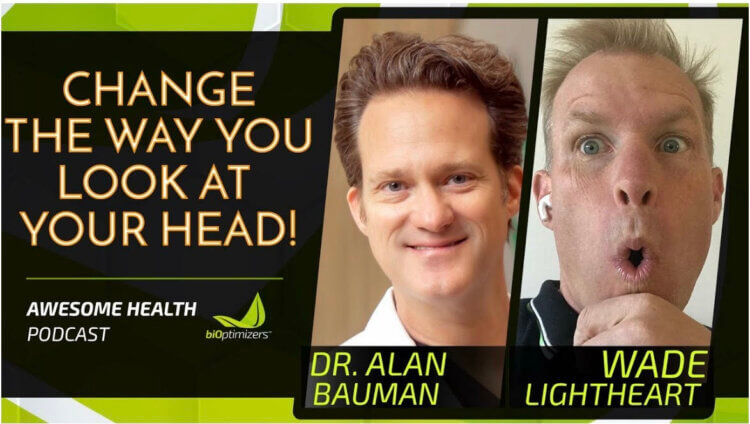
 Video: A Behind the Scenes Look at PRP for Hair Regrowth at Bauman Medical
Video: A Behind the Scenes Look at PRP for Hair Regrowth at Bauman Medical VIDEO: PRP Platelet-Rich Plasma For Hair Regrowth Frequently Asked Questions
VIDEO: PRP Platelet-Rich Plasma For Hair Regrowth Frequently Asked Questions VIDEO: The Team at Bauman Medical: Changing Lives for the Better!
VIDEO: The Team at Bauman Medical: Changing Lives for the Better! VIDEO: 2022 Bauman Medical Year In Review
VIDEO: 2022 Bauman Medical Year In Review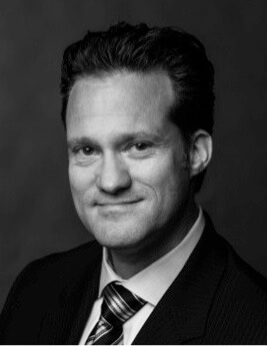 Dr. Alan J. Bauman, M.D.Hair Loss & Hair Transplant ExpertBoca Raton, FL
Dr. Alan J. Bauman, M.D.Hair Loss & Hair Transplant ExpertBoca Raton, FL

